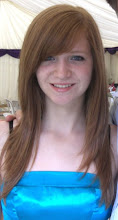I found this website really useful with tips on screen-writing as it gives a detailed guide on the do's and don't's.
http://www.screenwriting.info/
It looks quite hard! And it's different to TV because the story is more involved as the duration is longer. For GCSE media, as part of my exam on Sitcom, I wrote part of a script for my Sitcom (which I had to exclude from my final exam due to time) but I was quite happy with it. It seemed to capture the essence of Sitcom and show the characters in the way I intended.
This website http://www.script-o-rama.com/ has LOADS of free movie transcripts, however they have no character names, so I thought I'd take an extract from Mean Girls and add the character names to see if that extract could help me when writing my script.
Cady has just sat down with The Plastics.
Cady
I'm new. I just moved here from Africa.
Regina
What?
Cady
I used to be home-schooled.
Regina
Wait. What?
Cady
My mom taught me at home...
Regina
No, no.I know what home-school is.I'm not retarded.So you've actually never beento a real school before?Shut up. Shut up.
Cady
I didn't say anything.
Regina
Home-schooled. That's really interesting.
Cady
Thanks.
Regina
But you're, like, really pretty.
Cady
Thank you.
Regina
So you agree.
Cady
What?
Regina
You think you're really pretty.
Cady
Oh, I don't know...
This writing is clever because it introduces both characters at the same time. Cady gives the audience more information about her home-schooling, and the audience learn what a "mean girl" Regina is.
The Scene Heading, sometimes called Slugline, tells the reader of the script where the scene takes place. Are we indoors (INT.) or outdoors (EXT.)? Next name the location: BEDROOM, LIVING ROOM, at the BASEBALL FIELD, inside a CAR? And lastly it might include the time of day - NIGHT, DAY, DUSK, DAWN... information to "set the scene" in the reader's mind.
The Slugline can also include production information like CONTINUOUS ACTION, or ESTABLISHING SHOT or STOCK SHOT. Here are examples of Scene Headings:
INT. BEDROOM - MORNING
EXT. LAS VEGAS STRIP - SUNSET
INT. OFFICE - NIGHT - CONTINUOUS ACTION
EXT. KEY WEST MARINA - DAWN - ESTABLISHING
EXT. PASADENA - ROSE PARADE - STOCK FOOTAGE
On this website, there are lots of tips for writing and using software. For example;
The Scene Headings are aligned flush left (which we learned is about 1.5" from the edge of the paper) and are rarely long enough to reach the page margin.
The Scene Heading is written in ALL CAPS. Use a full stop after the INT. or EXT., a hyphen between the other elements of the Slugline.
I found out something interesting about dual dialogue. I had always wondered how they wrote it on a script when two charcters were speaking at once to each other. When two of your characters speak simultaneously, that's called dual dialogue or side by side dialogue. For example, if Frankie and Julie are in a heated argument.
............FRANKIE ................................JULIE
Get out of my life! I can't ......Don't you yell at me! I'll leave
stand the sight of you any ....when I'm when I'm good and
more!! .................................ready! Tough!!
(obviously the dots wouldn't be there, but blogger wouldn't let me space it out)
The character names are always centered and in capitals, and the dialogue aligned left. The font is always the same; Courier New 12pt in black. Here is a useful video on font tips for script-writing.
For part of my work experience, I went to the set of the film Chemical Wedding as I know the Producer, and I read the script. It was really thick but easy to read. The stage directions were detailed enough to create a mental picture, but not rambling. The font and spacing made it easy to read and understand.
When making the opening to my film I will take these things into account to make the best film I can.

0 comments:
Post a Comment